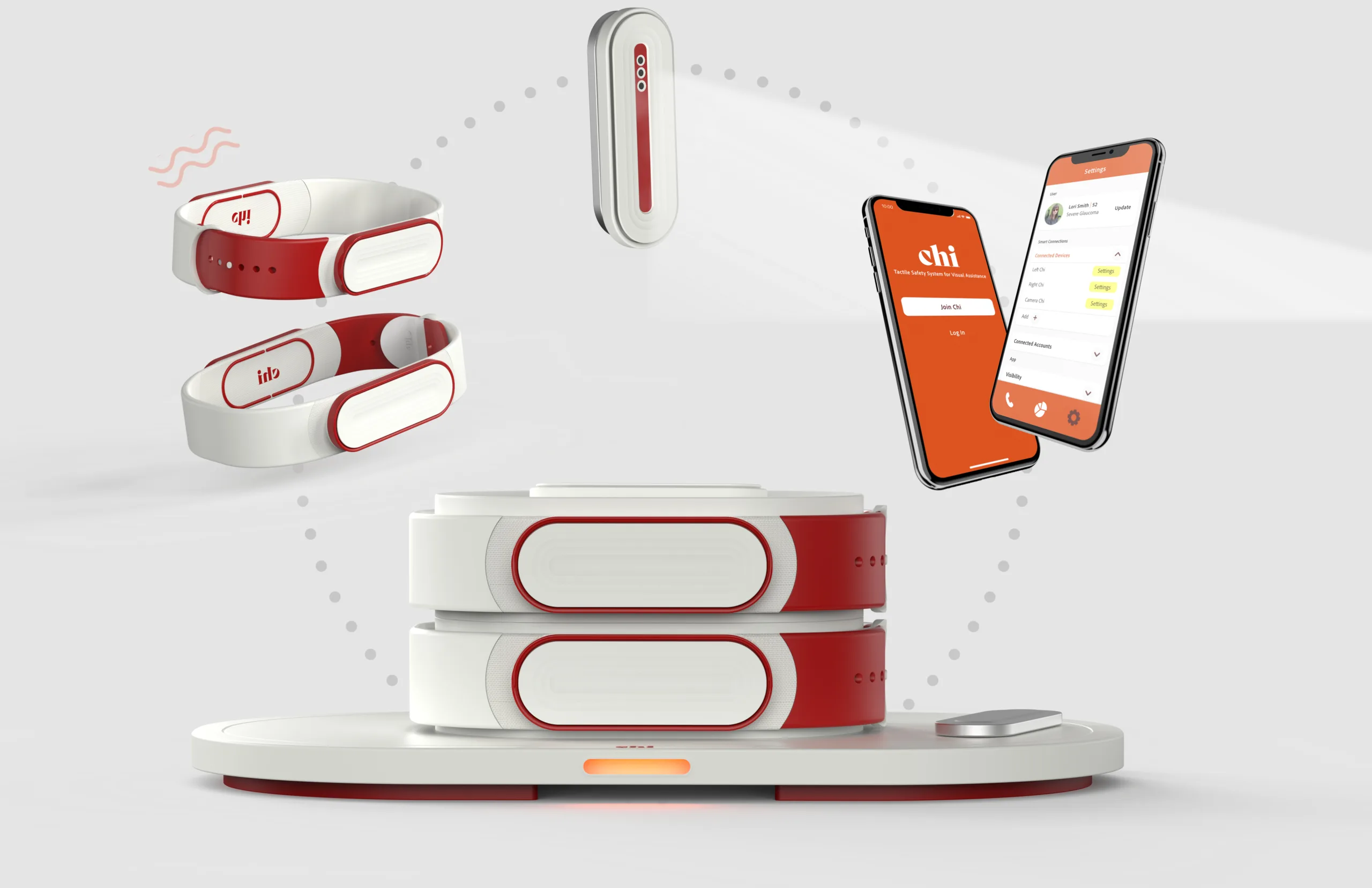Tactile Safety System for Visual Assistance
CHI is a system of wearable sensory devices for the visually impaired, consisting of a visual sensor, vibrating feedback units, a digital data hub and charging base. An International Housewares Student Competition Winner.
Industrial Design | 15 weeks | 2023
![]()
The Problem
The white cane is a useful tool for those who rely on it, but it falls short in detecting overhead obstacles like tree branches, posing risks to the quality of life, independence, and confidence of visually impaired individuals.
About
Globally, at least 2.2 billion people have a near or distance vision impairment. In a 2010 survey of 307 visually impaired individuals, about 13% had head-level accidents at least once a month, and 23% of these accidents needed medical attention.

Age-Related Macular Degeneration

Cataract

Diabetic Retinopathy

Glaucoma
The Market
A white cane is a device used by many people who are blind or visually impaired. A white cane primarily allows its user to scan their surroundings for obstacles or orientation marks, but is also helpful for onlookers in identifying the user as blind or visually impaired and taking appropriate care.
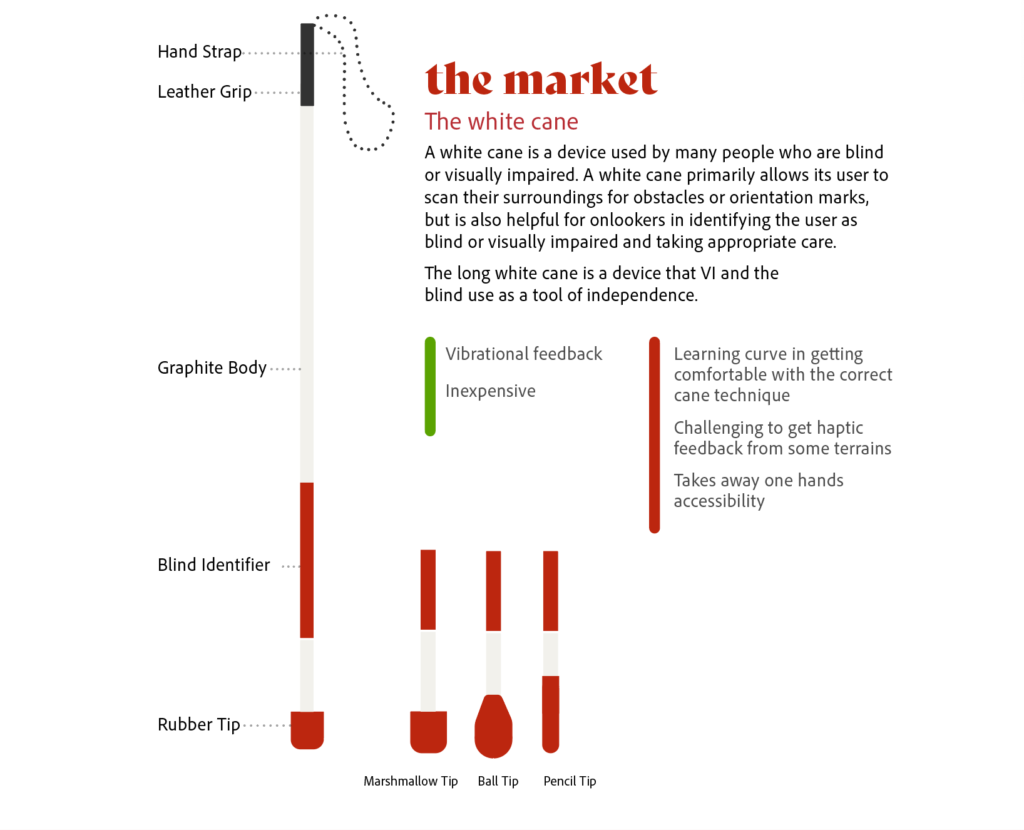
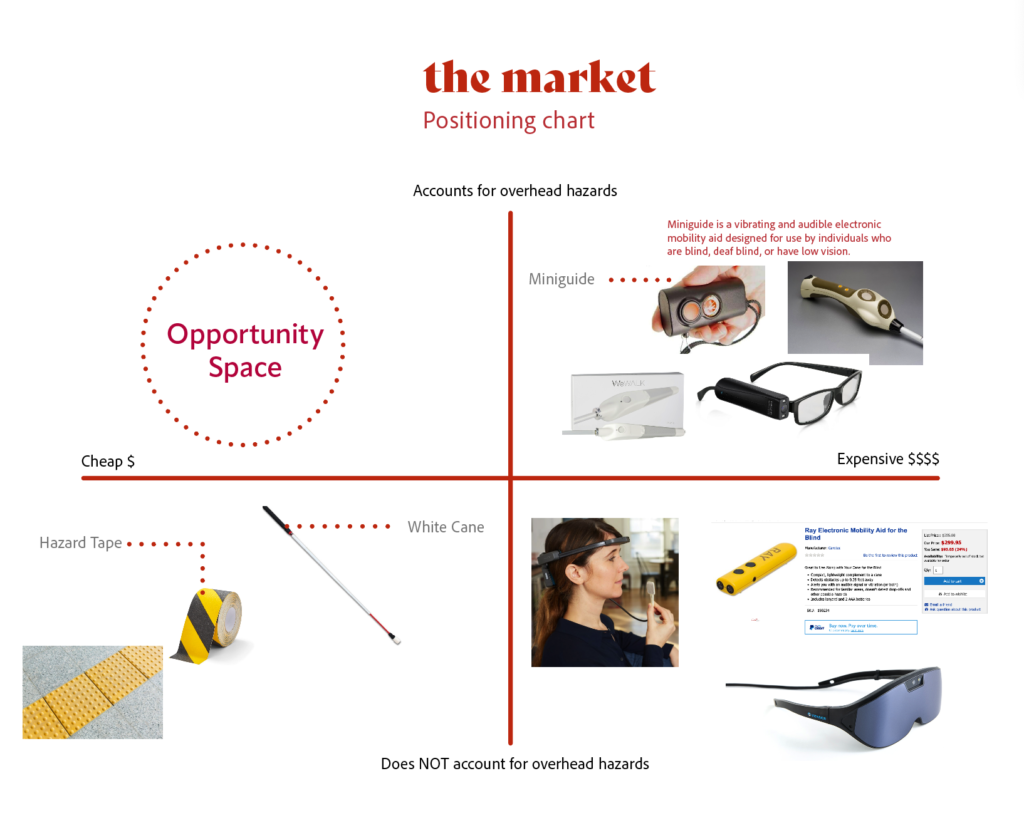
Process
I began to concept in areas I saw the most potential from my research findings. Thinking about how to communicate hazards back to the user as well as how to create some awareness among the public. I explored feedback loops, senses, and wear-ability
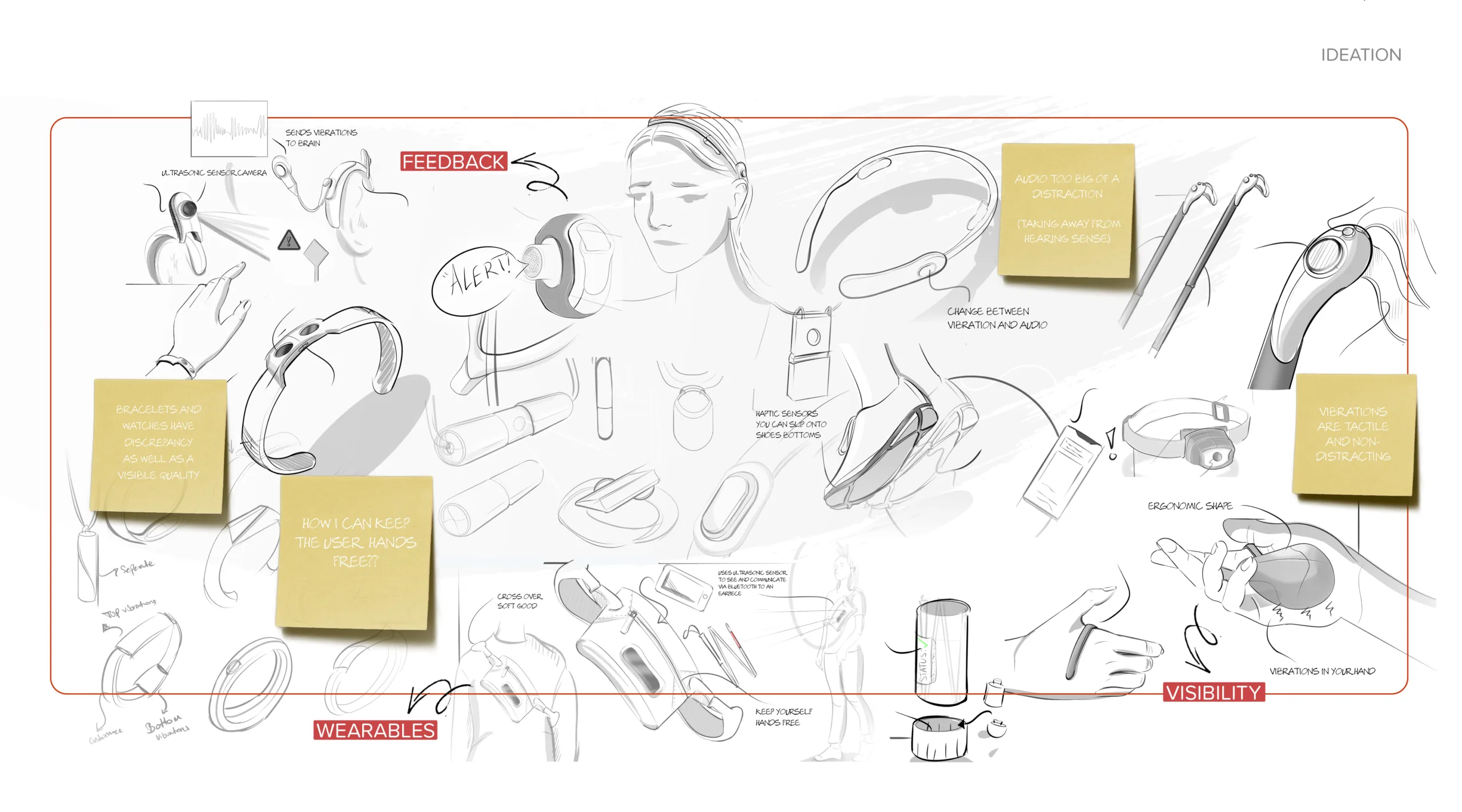
How it Works
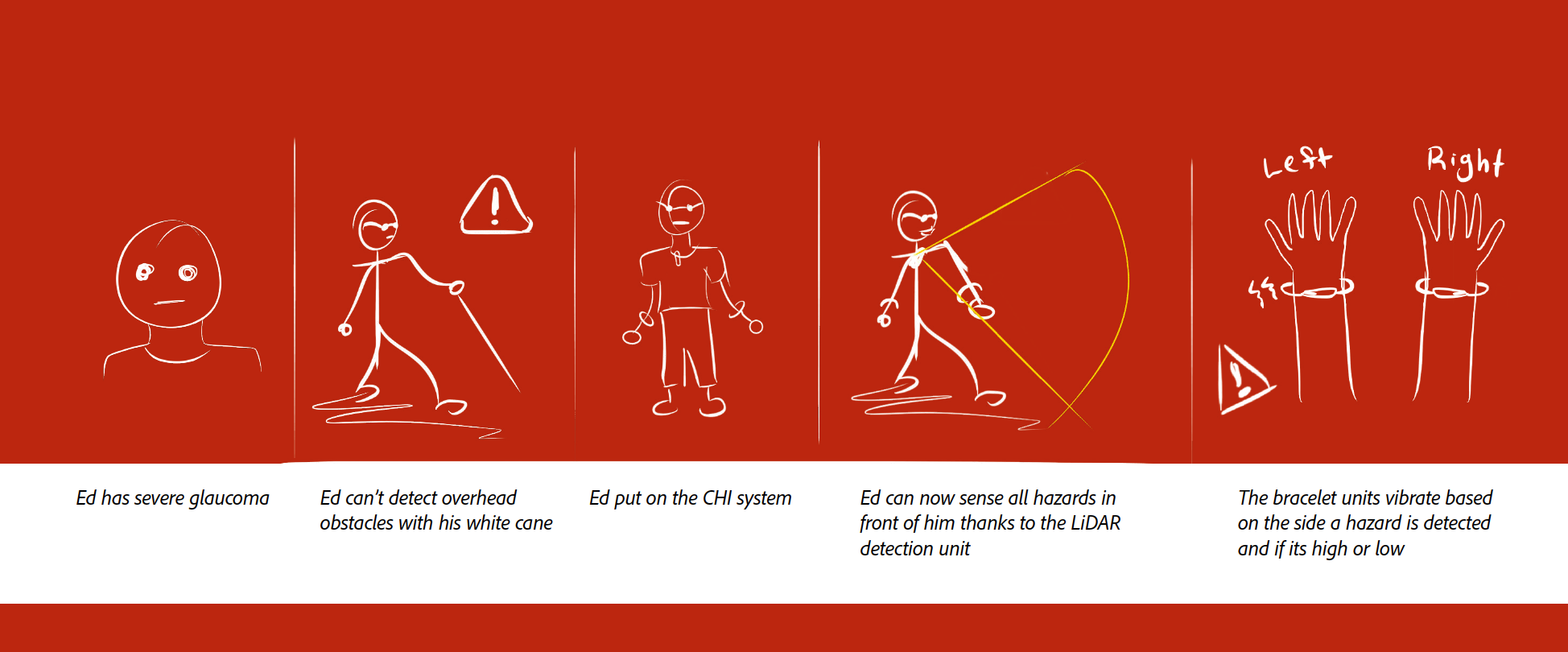
The Detecting Unit
With the power of LiDAR sensor this small wearable that clips to your shirt via a magnetic piece is able to detect the distance of the nearest hazard to the person
![]()
The Feedback Units
Slip on a left and a right wristband and the vibrations will indicate what side, the proximity, and if the hazard is above or below you by increasing the vibrations
![]()
The Base
The chi base provides a home for all the devices to charge wireless through electromagnetic induction to provide electricity to the wearable devices
![]()
